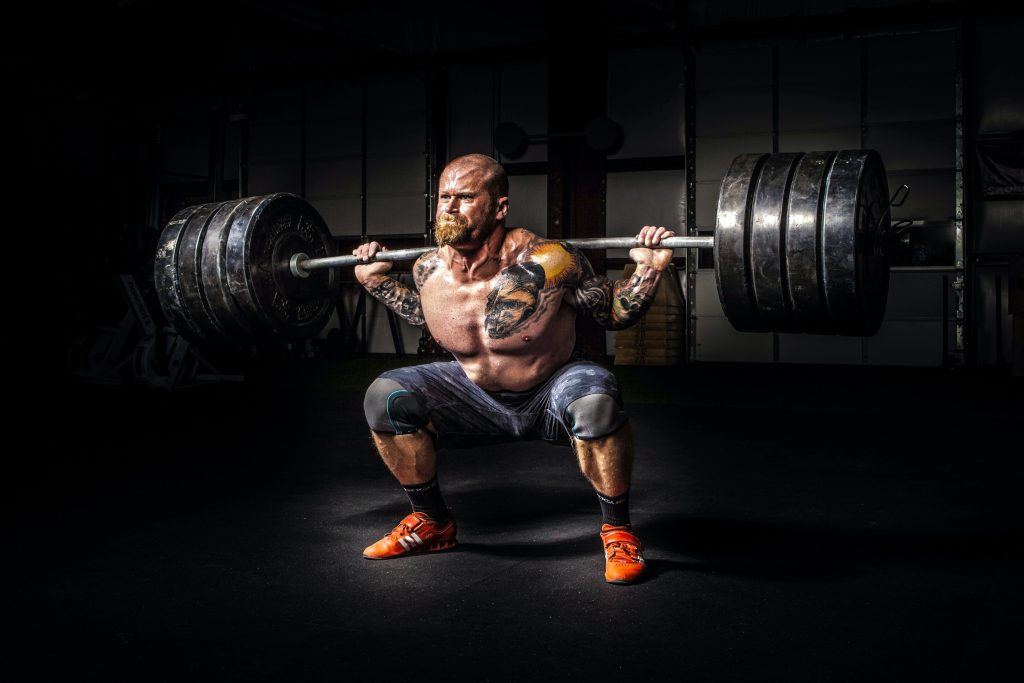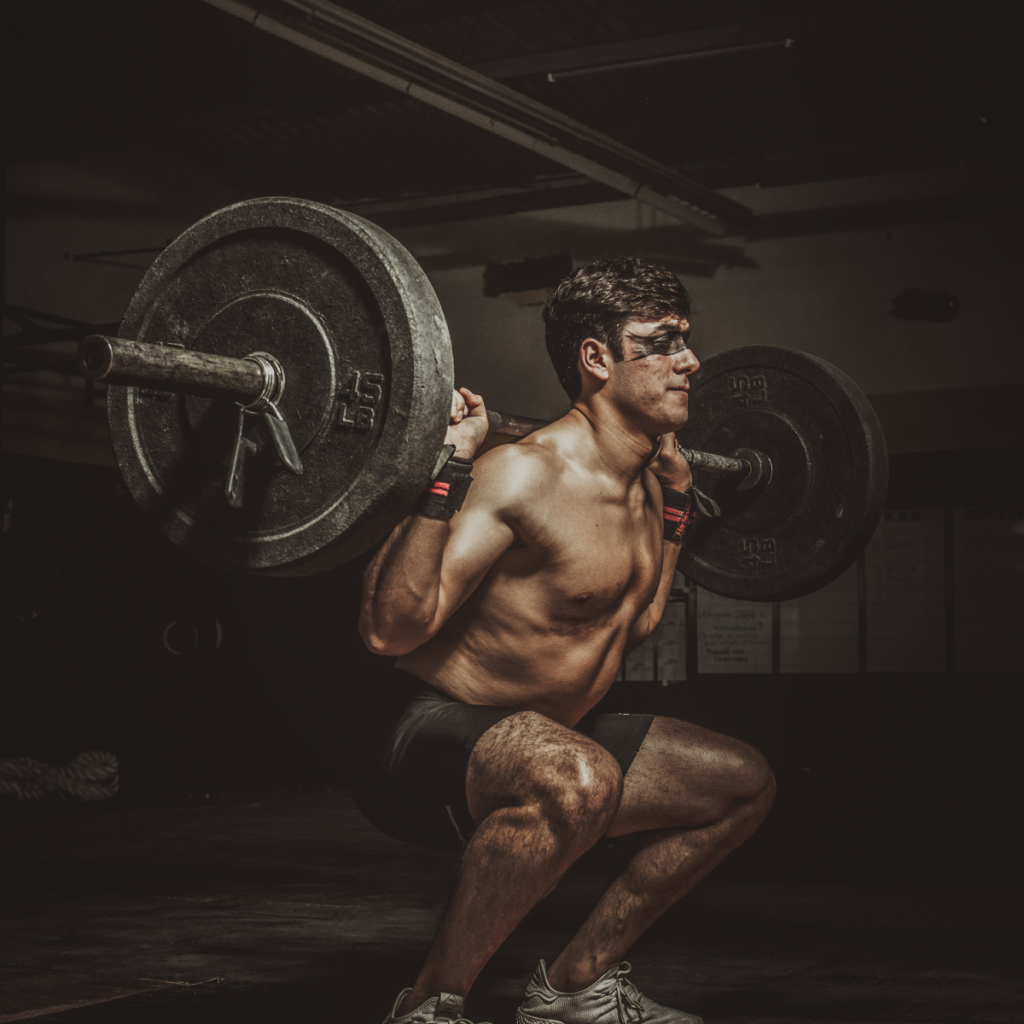Front Squats vs. Back Squats: Which is Right for Your Fitness Goals?
September 18, 2023

If you're on a fitness journey, you've probably come across two important squat variations: front squats and back squats. While both exercises target your lower body, they have unique benefits that can help you achieve specific fitness goals. So, which one should you choose? Let's dive deep into the world of squats and find out.

Mastering the Front Squat Technique
Front squats are a fantastic exercise that primarily targets your quadriceps, but also engages your core, glutes, and hamstrings. To perform them correctly, you need to master the right technique.
Step-by-Step Guide to Perfecting Your Front Squat Form
1. Start by positioning the barbell on the front of your shoulders, holding it with an overhand grip.
Front squats are a compound exercise that require proper form and technique to maximize their benefits. By positioning the barbell on the front of your shoulders, you create a more upright torso position, which places greater emphasis on your quadriceps. The overhand grip helps secure the barbell in place, allowing you to maintain control throughout the movement.
2. Keep your elbows high and your chest up, maintaining a tight core throughout the movement.
Elbow positioning is crucial in front squats. By keeping your elbows high, you create a "shelf" for the barbell to rest on, preventing it from rolling forward. This also helps to keep your chest up, promoting proper spinal alignment and reducing the risk of rounding your back. Engaging your core throughout the movement provides stability and helps maintain balance.
3. Descend slowly, pushing your hips back and bending your knees until your thighs are parallel to the ground. Remember to keep your heels firmly planted on the floor.
The descent phase of the front squat requires controlled movement. As you lower your body, focus on pushing your hips back to initiate the movement, which helps engage your glutes and hamstrings. Simultaneously, bend your knees to achieve a parallel thigh position. This depth ensures that you are maximizing quadriceps activation while maintaining proper form. Keeping your heels firmly planted on the floor helps maintain stability and prevents excessive forward lean.
4. Drive through your heels to stand up, straightening your legs and returning to the starting position. Breathe out as you do so.
The ascent phase of the front squat is where the power comes into play. By driving through your heels, you activate your quadriceps, glutes, and hamstrings to propel your body upward. Straightening your legs and returning to the starting position completes one repetition. Remember to exhale during this phase to maintain proper breathing technique and core stability.
Mastering the front squat technique takes time and practice. By following these step-by-step instructions, you can ensure that you are performing front squats with optimal form, maximizing their benefits, and reducing the risk of injury.
Enhancing Your Front Squat with Straps
If you're looking to take your front squat to the next level, consider incorporating lifting straps into your routine. Lifting straps are a useful tool that can help you improve your grip strength and stability during the front squat exercise. In this article, we will explore how to properly use straps for front squats and the benefits they can provide.
How to Properly Use Straps for Front Squats
1. Attach the lifting straps to the barbell, ensuring they are securely in place. It is important to check that the straps are properly fastened to the barbell to prevent any accidents or injuries during your workout.
2. Place your hands through the straps and grip the barbell with an overhand grip. This grip allows you to have a secure hold on the barbell, reducing the risk of it slipping out of your hands during the front squat movement.
3. Perform the front squat following the same technique described earlier. Keep your core engaged, chest up, and knees tracking over your toes as you lower yourself down into the squat position. The straps provide extra support and help you maintain a strong grip, allowing you to focus on executing the movement with precision.
4. The straps not only improve your grip strength but also help distribute the weight more evenly across your upper body. This can alleviate some of the strain on your wrists and forearms, allowing you to perform the front squat with greater ease and comfort.
Using lifting straps for front squats can be particularly beneficial for individuals with weaker grip strength or those recovering from wrist or forearm injuries. By incorporating straps into your routine, you can continue to challenge your lower body without compromising your form or risking further injury.
However, it is important to note that while lifting straps can be a useful tool, they should not be relied upon as a substitute for developing proper grip strength. It is still essential to work on strengthening your grip through exercises such as farmer's walks, deadlifts, and pull-ups.
In conclusion, incorporating lifting straps into your front squat routine can be a valuable addition to your training regimen. They provide extra support, improve grip strength, and allow you to focus on executing the movement with precision. Remember to always use lifting straps responsibly and in conjunction with other grip-strengthening exercises to ensure a well-rounded and effective workout.
The Ultimate Guide to Back Squatting
Back squats, on the other hand, are a classic exercise that primarily targets your glutes, hamstrings, and lower back. They also engage your quadriceps and core.
Tips and Tricks for a Powerful Back Squat
1. Position the barbell on your upper back, resting it on your trapezius muscles. Make sure it's secure and comfortable.
2. Keep your chest up, your core tight, and your feet shoulder-width apart.
3. Lower yourself down by bending your knees and pushing your hips back, maintaining a neutral spine.
4. Push through your heels and drive your hips forward to return to the starting position.
Unveiling the Benefits of Front Squats
Front squats offer unique benefits that can enhance your fitness journey. Incorporating front squats into your workout routine can have a significant impact on your overall strength and mobility.
Why Front Squats Should Be in Your Workout Routine
1. Improved posture: Front squats not only target your lower body but also strengthen your core and upper back. By holding the weight in front of you, your body is forced to maintain an upright position, which helps improve your posture throughout the day. This can be especially beneficial for individuals who spend long hours sitting at a desk or have a sedentary lifestyle.
2. Increased quad activation: Front squats place a greater emphasis on your quadriceps compared to traditional back squats. With the weight positioned in front of you, your quadriceps are forced to work harder to lift the load, leading to increased muscle activation and growth in this muscle group. Stronger quads not only contribute to better overall lower body strength but also help in various functional movements such as walking, running, and jumping.
3. Enhanced mobility: Performing front squats requires a greater degree of flexibility in your wrists, shoulders, and thoracic spine. As you hold the barbell in the front rack position, your wrists need to be flexible enough to support the weight. Additionally, your shoulders and thoracic spine need to have adequate mobility to maintain an upright torso throughout the movement. By regularly incorporating front squats into your routine, you can gradually improve your flexibility in these areas, leading to enhanced overall mobility and movement quality.
4. Core engagement: Front squats heavily engage your core muscles to maintain stability and balance during the exercise. The weight positioned in front of your body creates an anterior load, which requires your core muscles to work harder to keep your torso upright. This increased demand on your core muscles not only helps in building a stronger and more stable core but also improves your overall functional strength.
5. Balanced muscle development: While back squats primarily target your glutes and hamstrings, front squats place a greater emphasis on your quadriceps and core muscles. By incorporating both back squats and front squats into your workout routine, you can achieve a more balanced lower body development, ensuring that all major muscle groups are effectively targeted and strengthened.
6. Functional carryover: The movement pattern of front squats closely mimics various daily activities and sports movements. Whether you're lifting heavy objects from the ground, playing sports that require explosive lower body power, or simply performing activities of daily living, front squats can help improve your overall functional strength and performance.
By understanding the unique benefits of front squats and incorporating them into your workout routine, you can take your fitness journey to the next level. Remember to start with lighter weights and focus on maintaining proper form and technique to maximize the benefits and minimize the risk of injury.
Exploring the Benefits of Back Squats
Back squats are a staple in many strength training routines. Let's uncover the benefits they bring to the table.
How Back Squats Can Take Your Strength Training to the Next Level
1. Greater weightlifting potential: Back squats allow you to handle heavier weights compared to front squats, helping you build overall strength.
2. Comprehensive muscle involvement: Engaging multiple muscle groups such as your glutes, hamstrings, and lower back, back squats provide a thorough full-body workout.
3. Increased hormone release: Compound movements like back squats stimulate the release of growth hormone, promoting muscle growth and fat loss.
Targeted Muscles in the Front Squat
Now, let's take a closer look at the specific muscles that the front squat targets.
Understanding the Muscle Groups Engaged in Front Squats
1. Quadriceps: Your quads are the primary muscles worked during front squats, making them an excellent exercise to develop strong and powerful thighs.
2. Core: The front squat requires significant core activation to maintain an upright posture and stabilize the weight.
3. Glutes and hamstrings: Although not the primary focus, these muscle groups play a supporting role in the movement, aiding in stabilization and strength.
Muscles Worked in the Back Squat
Similarly, let's explore the specific muscles that the back squat targets.
A Breakdown of the Muscle Activation in Back Squats
1. Glutes: Back squats heavily target your glute muscles, helping you build a strong and shapely posterior.
2. Hamstrings: The back squat engages your hamstrings, contributing to the development of balanced leg strength.
3. Quadriceps: Just like front squats, back squats also work your quadriceps, allowing for comprehensive leg development.
4. Lower back: The back squat recruits your lower back muscles to maintain an upright and stable position throughout the movement.
Finding the Perfect Front Squat to Back Squat Ratio
So, now that we've explored the benefits of both front squats and back squats, how do you strike the perfect balance?

Achieving Balance in Your Squatting Routine
1. Goal-dependent ratio: If your primary goal is building leg size, focus on back squats, incorporating front squats as an accessory exercise. However, if strength and athleticism are your main objectives, prioritize front squats in your routine.
2. Individual preferences: Experiment and listen to your body. Find the ratio that works best for you and keeps you motivated in your fitness journey.
3. Progressive overload: Regardless of the ratio you choose, remember to gradually increase the weight and intensity of your squats to continue challenging your muscles and making progress.
So, front squats or back squats? The answer ultimately lies in your fitness goals and personal preferences. These two variations complement each other, allowing you to achieve a well-rounded lower body workout. Incorporate both into your routine and watch your fitness goals come to life!

 Back to Blog
Back to Blog